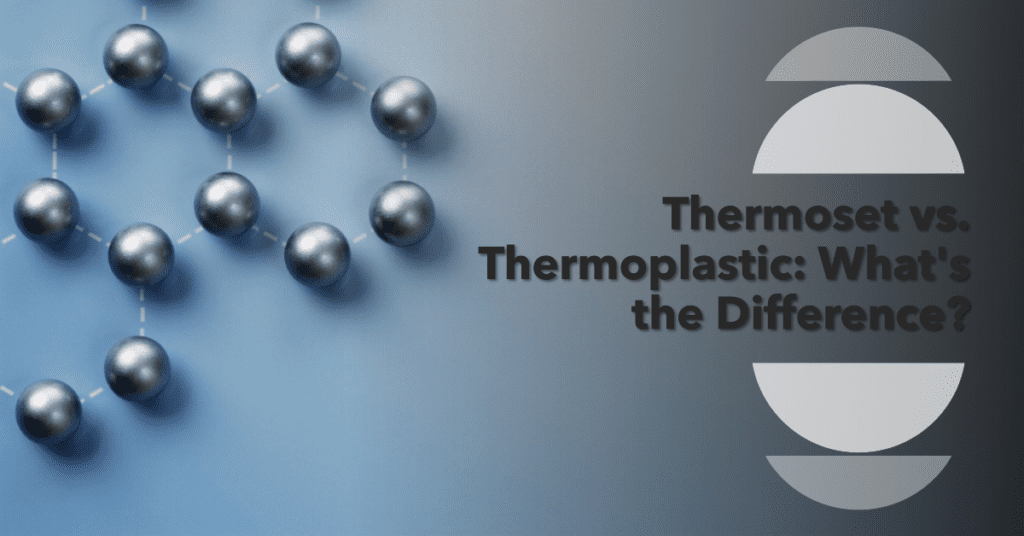
Polymers is ruled by two dominant categories: thermosets and thermoplastics. Each boasts unique attributes, expanding their relevance across diverse applications in many industries, from automotive and electronics to packaging and medical sectors. The debate, often phrased as ‘thermoset vs thermoplastic,’ is not really about declaring one as superior but more about understanding one’s unique traits and determining one’s suitability for specific applications.
This comprehensive guide dives deep into these two plastic types, helping you understand their fundamental differences, characteristics, pros, cons, and ideal applications for each.
Understanding the Basics: What are Thermosets?
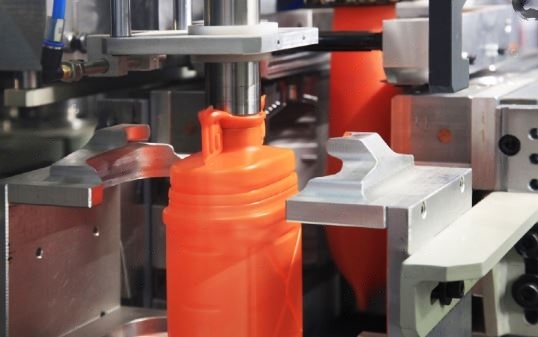
Thermoset plastic manufacturing
Thermosets, also known as thermosetting polymers, are a unique class of materials with a special characteristic—once cured or ‘set,’ they cannot be re-melted or reshaped. This is due to a chemical reaction that takes place during the curing process, where heat or another curing agent induces cross-links between the polymer chains. This process results in a heavily interconnected, three-dimensional network of irreversible bonds.
Thermosets are appreciated for their high heat resistance, superior dimensional stability, and excellent structural strength, making them suitable for high-performance applications. However, their inability to be re-melted also means they are generally not recyclable.
Types of Thermosetting Polymers
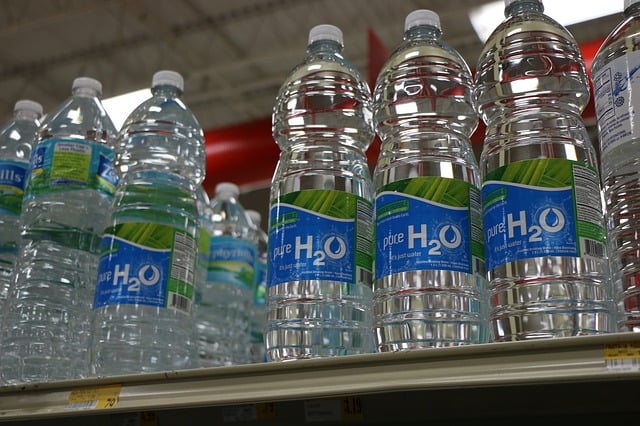
The world of thermosets is a vibrant one, featuring a number of polymers each with its own distinct properties. Let’s discuss some of them in brief.
Table 1: Different types of thermosetting polymers
| Thermosetting Polymer | Key Properties | Common Applications |
|---|---|---|
| Epoxy | High adhesive quality, good mechanical properties, excellent chemical resistance | Adhesives, paints, protective coatings |
| Polyester | Good wear and chemical resistance | Fabrics, boat building, high-performance industrial applications |
| Polyurethane | High elasticity and toughness | Foam insulation materials, sealants, car parts |
| Phenolic | Excellent fire resistance, high dimensional stability, good mechanical strength | Billiard balls, lab countertops, insulating material in electronics |
| Silicone | Outstanding heat resistance, rubber-like elasticity | Kitchenware, medical devices, electrical insulation |
As we delve further into the realm of thermosets, we will gain a more detailed understanding of these materials, revealing why they are chosen for specific applications over their thermoplastic counterparts.
Thermoplastics: What Are They?
Thermoplastics, in contrast to thermosets, undergo a physical change when heated. They soften upon heating and harden upon cooling, and this process is fully reversible and can be repeated numerous times without significant degradation. This characteristic is due to the absence of cross-linking in thermoplastics, allowing the polymer chains to slide past each other during heating, resulting in a softer and more pliable material.
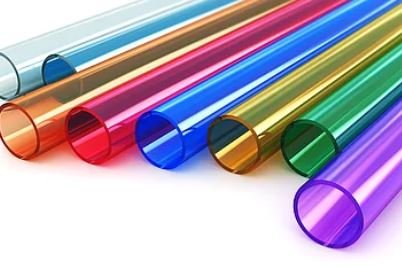
Thermoplastic tubes
Thermoplastics are highly versatile due to their re-processability and ease of molding into various shapes and sizes. They can be injection-molded, blow-molded, extruded, or even pressed into films or fibers. While generally less heat resistant than thermosets, thermoplastics offer excellent flexibility, lower density, and high impact resistance. However, these properties can greatly vary depending on the specific type of thermoplastic.
Types of Thermoplastic Polymers

Thermoplastics encompass a wide range of polymers, each with its own set of characteristics and potential applications. Some of the common types of thermoplastics include:
Table 2: Different types of thermoplastic polymers
| Thermoplastic Polymer | Key Properties | Common Applications |
|---|---|---|
| Polyethylene (PE) | High ductility, impact resistance, low cost | Packaging films, bottles, pipes |
| Polyvinyl Chloride (PVC) | Good mechanical strength, flame retardance | Window frames, pipes, cable insulation |
| Polystyrene (PS) | Ease of processing, excellent dimensional stability | Packaging, insulation, disposable cutlery |
| Polypropylene (PP) | High melting point, good chemical resistance, low density | Automotive parts, containers, carpeting |
| ABS | Toughness, gloss, good electrical insulation | LEGO blocks, automotive components, electronic housings |
What is the Differences: Thermosets vs. Thermoplastics
One critical distinguishing factor between thermosets and thermoplastics is their reaction to heat. Once cured, thermosets can’t be reprocessed, while thermoplastics can be heated, cooled, and reshaped multiple times. This contrast influences their physical properties, applications, and recycling capabilities.
Now, Let’s delve deeper into the key differences between these two categories of polymers.
Processing and Re-processability
Thermoset plastics undergo an irreversible chemical reaction when heated for the first time, leading to the formation of a rigid, inflexible material that retains its shape and structure even under high temperatures. Once formed, a thermoset cannot be melted or reshaped again, rendering it non-recyclable through conventional means.
On the other hand, thermoplastic softens when heated and hardens when cooled – a process that is reversible. This means thermoplastics can be molded into various shapes multiple times, giving them a significant edge in terms of recyclability.
Mechanical and Thermal Properties
Thermosets are known for their excellent dimensional stability, high heat resistance, and superior structural rigidity. This makes them an ideal choice for applications that require materials to retain their shape and strength under high heat or mechanical stress.
While thermoplastic offers lower heat resistance than thermosets, thermoplastics provide excellent flexibility, impact resistance, and toughness. Their properties can range widely, depending on the type of thermoplastic, allowing for their use in a variety of applications.
Applications
Due to their high heat resistance and dimensional stability, thermosets find applications in high-performance areas like electronics, aerospace, and automotive industries. They are often used in insulation, structural components, adhesives, and sealants.
Thermoplastics are found in a broad range of applications due to their processability and versatility. From packaging materials and containers to medical devices and automotive parts, thermoplastics have a wide-reaching impact on our daily lives.
Table 3: Comparison of thermoset and thermoplastics
| Comparison Aspect | Thermosets | Thermoplastics |
|---|---|---|
| Processing and Reprocessability | Cannot be re-melted or reshaped, not easily recyclable | Can be re-melted and reshaped, highly recyclable |
| Mechanical and Thermal Properties | High heat resistance and dimensional stability, rigid | Lower heat resistance, and flexible and tough, properties can vary |
| Applications | Electronics, aerospace, and automotive industries | Packaging, medical devices, automotive parts |
Thermoset Vs Thermoplastic: Physical and Mechanical Properties
When comparing thermoset and thermoplastic materials, it’s essential to note their physical and mechanical properties. Often quantified numerically, these properties significantly influence how these materials perform under different conditions and their suitability for various applications.
Thermosets
Thermosets are characterized by their high heat resistance, excellent dimensional stability, and good mechanical strength, among other properties. They often display higher rigidity and resistance to creep compared to thermoplastics. However, these properties can vary widely depending on the specific type of thermoset material and the curing conditions.
Let’s take epoxy resin, a common type of thermoset, as an example:
- Tensile strength: Epoxy resin typically has a tensile strength of 7,000 to 14,500 psi (pound per square inch).
- Flexural strength: This material generally displays a flexural strength between 10,500 and 16,000 psi.
- Heat deflection temperature: Epoxy resin has a heat deflection temperature typically above 200°C.
Thermoplastics
Thermoplastics, conversely, are characterized by their recyclability, elasticity, and lower heat resistance compared to thermosets. Their mechanical properties can also vary widely depending on the specific type of thermoplastic and processing conditions.
Take polyethylene (PE), a common type of thermoplastic, as an example:
- Tensile strength: Polyethylene can have a tensile strength between 1,600 and 5,500 psi, depending on the specific type (HDPE, LDPE, etc.).
- Flexural strength: PE generally displays a flexural strength in the range of 800 to 1,500 psi.
- Heat deflection temperature: The heat deflection temperature for PE is typically less than 100°C.
Table 4: Comparison table summarizing the properties mentioned
| Properties | Epoxy Resin (Thermoset) | Polyethylene (Thermoplastic) |
|---|---|---|
| Tensile Strength (psi) | 7,000 – 14,500 | 1,600 – 5,500 |
| Flexural Strength (psi) | 10,500 – 16,000 | 800 – 1,500 |
| Heat Deflection Temperature (°C) | >200 | <100 |
Machinability Comparison of Different Thermosets and Thermoplastics
When it comes to manufacturing processes like machining, both thermosets and thermoplastics exhibit different behaviors and characteristics that can impact their ease, efficiency, and outcomes. Machinability is determined by a material’s resistance to deformation and removal during machining processes such as milling, turning, or drilling.
1. Machinability of Thermosets
Once cured, thermosets form a rigid, cross-linked structure. This gives them excellent dimensional stability, allowing for tight tolerances during machining. Thermosets like epoxy resin and phenolics can be machined using conventional methods, albeit with appropriate tool selection and operating parameters to prevent chipping or cracking.
For example, machining thermosets usually requires sharp cutting tools and lower cutting speeds to avoid excessive heat buildup, which can cause the material to degrade or the tool to wear prematurely.
2. Machinability of Thermoplastics
Thermoplastics, on the other hand, can soften with heat. While this characteristic allows them to be reshaped, it can pose challenges during machining, particularly with high-speed operations that generate substantial heat. Techniques such as cooling or slower machining speeds can be employed to prevent the material from melting or deforming.
For instance, thermoplastics like polyethylene and polypropylene are soft and have low melting points, requiring careful handling during machining to avoid deformation. In contrast, high-performance thermoplastics like PEEK and polycarbonate have higher melting points and can be machined at higher speeds.
Table 5: Comparing the machinability of various thermosets and thermoplastics.
| Material Type | Machinability | Notable Characteristics |
|---|---|---|
| Epoxy Resin (Thermoset) | Moderate to high | Requires sharp tools and slower speeds to avoid chipping or cracking |
| Phenolics (Thermoset) | Moderate to high | Requires sharp tools and slower speeds; may produce abrasive dust |
| Polyethylene (Thermoplastic) | Moderate | Soft material requires cooling or slower speeds to prevent melting |
| Polypropylene (Thermoplastic) | Moderate | Soft material requires cooling or slower speeds to prevent melting |
| PEEK (Thermoplastic) | High | High-performance thermoplastic can be machined at higher speeds |
| Polycarbonate (Thermoplastic) | High | High-performance thermoplastic can be machined at higher speeds |
Exploring Specific Use Cases: Thermosets and Thermoplastics in Action
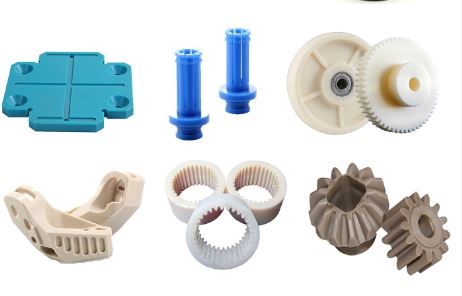
Various thermoplastic parts created with CNC machining
In real-world applications, the choice between thermosets and thermoplastics often comes down to the specific demands of the product or part in question. From everyday items to specialized industrial components, both categories of polymers bring their unique strengths to the table.
Thermosets in Aerospace and Automotive Industries
- Aerospace: Thermosets, specifically epoxy resins, are often used in the manufacture of composite materials for aerospace applications due to their superior heat resistance, light weight, and high strength-to-weight ratio. These composites are used in various aircraft components, including wing and fuselage structures.
- Automotive: In the automotive industry, thermosets like polyurethane and polyester are used extensively due to their excellent mechanical strength and heat resistance. These materials find applications in the production of body panels, engine components, and even seating foam.
Thermoplastics in Packaging and Medical Industries
- Packaging: In the packaging industry, thermoplastics like polyethylene and polypropylene are widely used due to their flexibility, strength, and ability to create airtight seals. They’re used in everything from plastic bags and film wrap to beverage bottles and food containers.
- Medical: In the medical field, thermoplastics like PVC and polypropylene are used in a range of applications due to their chemical resistance, stabilizability, and safety for use in medical environments. They’re commonly found in applications like tubing, IV bags, and disposable syringes.
The adaptability of both thermosets and thermoplastics, combined with their unique strengths, ensures they continue to play crucial roles across various industries. In closing, it’s not about thermoset vs. thermoplastic, but rather about how the unique properties of each can be harnessed to meet specific needs.
Considering the Environmental Impact: Thermosets and Thermoplastics
The environmental impact of materials, particularly plastics, has become a major concern in recent years. Both thermosets and thermoplastics have their unique environmental implications that are important to consider.
1. Thermosets and the Environment
Thermosets, once cured, are not easily recyclable due to their cross-linked structure. This results in a significant waste management challenge when these materials reach the end of their lifecycle. While they can’t be re-melted or reshaped for reuse, certain types of thermosets can be ground up and used as fillers in other products or incinerated to recover energy. Research is ongoing to develop more sustainable solutions for thermoset waste, including the design of new types of thermosets that can be depolymerized and reprocessed.
2. Thermoplastics and the Environment
On the other hand, thermoplastics, due to their ability to be reheated and reshaped, are inherently more recyclable. However, the reality is more complex. Not all thermoplastics are recycled due to factors like contamination, mixed plastic types, and local recycling capabilities. Additionally, while recycling can reduce the demand for virgin plastic, it’s not a perfect solution. Recycling processes still consume energy and can result in the degradation of the material over time.
The Role of Prolean’s Plastic Machining Services
Prolean’s Plastic Machining Services is committed to providing excellent service for all your plastic manufacturing needs, whether you require thermosets or thermoplastics. We have an extensive understanding of these materials and their properties, which we leverage to ensure precision manufacturing for a wide range of applications.
We pride ourselves on our state-of-the-art machining capabilities, which allow us to deliver high-quality products and services tailored to your specific requirements. From concept to completion, our dedicated team is committed to turning your vision into reality.
At Prolean, we understand that navigating the world of thermosets and thermoplastics can be a daunting task. That’s why we’re here to guide you every step of the way, providing reliable support and expert advice to help you make informed decisions about your project.
So whether you’re looking to develop a new product or improve an existing one, trust Prolean’s Plastic Machining Services to deliver the best possible solutions for your plastic manufacturing needs.
Conclusion
In conclusion, the decision to choose between thermosets and thermoplastics for a particular application boils down to understanding their distinct characteristics and comparing them in context. This article has presented an in-depth look into thermosets and thermoplastics, shedding light on their basic structures, properties, and machinability. The side-by-side comparison of their properties emphasizes the importance of considering the physical and mechanical characteristics of the material, its environmental impact, and how it behaves during machining. Understanding these aspects allows engineers and designers to make informed decisions when selecting materials for specific applications.
Remember, the ideal plastic isn’t determined solely by whether it’s a thermoset or thermoplastic, but rather, by how well it meets the unique requirements of the intended application. As part of this exploration, Prolean’s Plastic Machining Services can help navigate these decisions, providing expert advice and quality execution in all aspects of plastic machining and fabrication.
FAQ’s
What are the key differences between thermosets and thermoplastics?
Thermosets undergo an irreversible chemical reaction when heated, forming a rigid, inflexible material that retains its shape under high temperatures. In contrast, thermoplastics soften when heated and harden when cooled, a process that is reversible, allowing these materials to be reshaped multiple times.
Are thermosets recyclable?
Traditional thermosets are not easily recyclable due to their cross-linked structure. However, they can be ground up and used as fillers or incinerated for energy recovery. Research is ongoing to develop new types of thermosets that can be depolymerized and reprocessed.
Are all thermoplastics recyclable?
While thermoplastics can technically be reshaped multiple times, not all thermoplastics are recycled due to issues like contamination, mixed plastic types, and limitations in local recycling capabilities.
Which industries use thermosets and thermoplastics?
Both thermosets and thermoplastics find applications across various industries. Thermosets are commonly used in the aerospace, automotive, and electronics industries due to their heat resistance and dimensional stability. Thermoplastics, with their flexibility and processability, are found in packaging, medical devices, and automotive parts, among others.



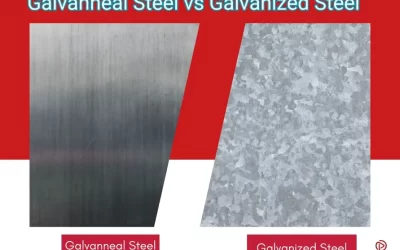
0 Comments